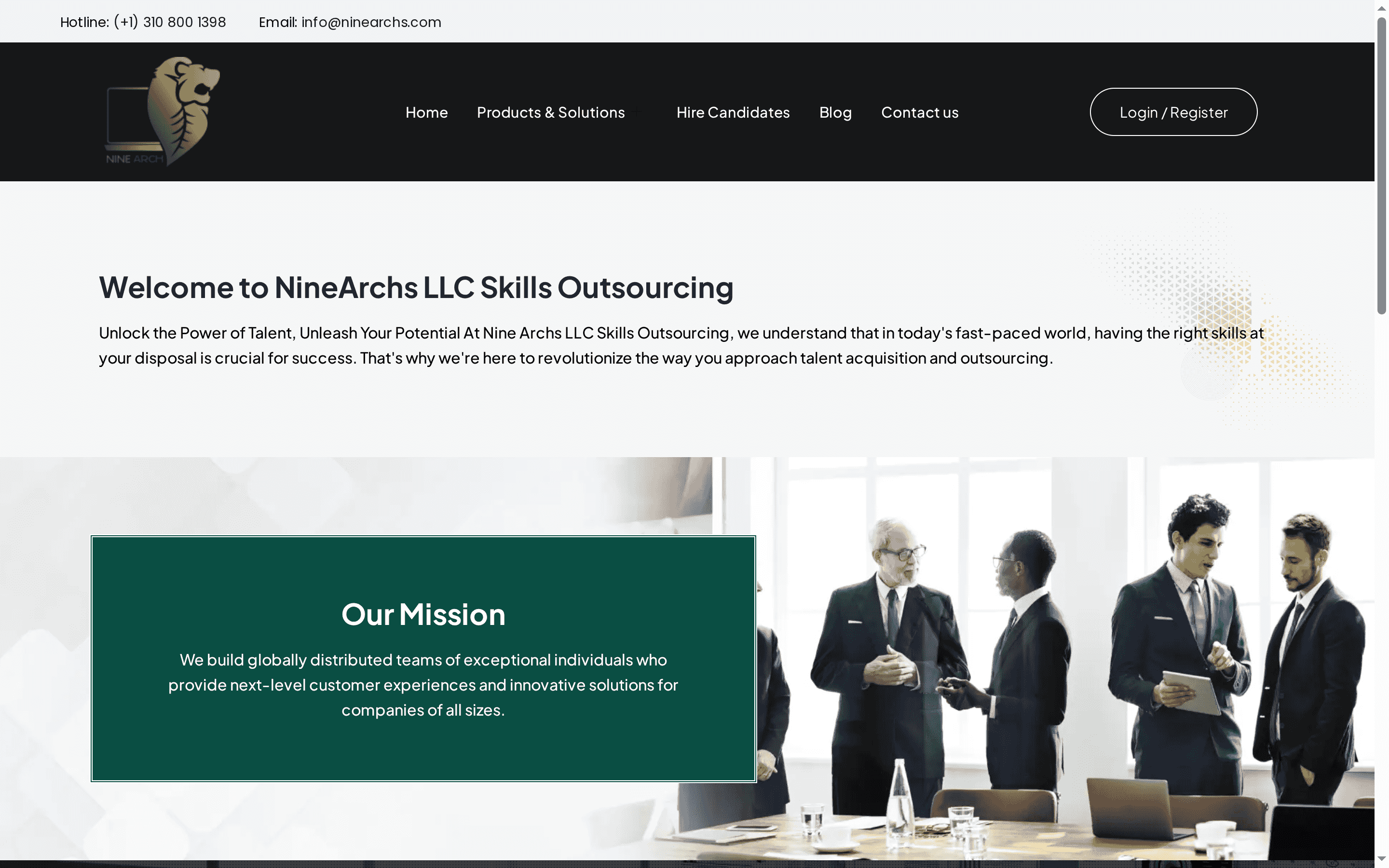More than 80 percent of large companies now rely on outsourcing to sharpen their focus and cut costs. Yet the terminology around outsourcing can confuse even experienced managers. Knowing the difference between offshoring, insourcing, or knowledge process outsourcing is crucial for making smart decisions that boost productivity and reduce risk. This guide offers clear definitions and practical insights to help you navigate the fast-changing world of external business partnerships.
Core Outsourcing Terminology and Definitions
Outsourcing represents a strategic business approach where organizations delegate specific tasks, functions, or processes to external service providers. This complex practice involves transferring internal work responsibilities to third-party vendors who can execute those tasks more efficiently or cost-effectively. Understanding outsourcing benefits for companies requires comprehending the fundamental terminology that defines these professional relationships.
Outsourcing fundamentally means contracting work to an external organization, typically to leverage specialized expertise, reduce operational costs, or focus on core business functions. The concept encompasses various models and strategies, ranging from project-specific engagements to comprehensive business process transformations. Key terminologies within this domain include:
- Insourcing: Bringing previously outsourced tasks back in-house
- Offshoring: Relocating business processes to another country
- Nearshoring: Outsourcing to providers in geographically close or neighboring regions
- Business Process Outsourcing (BPO): Contracting entire operational processes like customer service or accounting
- Knowledge Process Outsourcing (KPO): Outsourcing specialized knowledge-based work such as research and analysis
The nuanced landscape of outsourcing extends beyond simple task delegation. Strategic outsourcing involves carefully selecting external partners who can provide not just labor, but genuine value enhancement. 7 Essential Outsourcing Best Practices highlight the importance of selecting providers who align with organizational goals, maintain quality standards, and contribute to long-term business growth strategies. Understanding these terminologies enables businesses to make informed decisions about external workforce engagement and optimize their operational efficiency.
Types of Outsourcing and Key Distinctions
Businesses today leverage diverse outsourcing strategies to optimize operational efficiency and strategic focus. Understanding the nuanced landscape of outsourcing types is crucial for making informed decisions about external workforce engagement. Understanding why business owners outsource helps organizations recognize the strategic potential beyond simple cost reduction.
Business Process Outsourcing (BPO) represents a comprehensive approach to external resource management, categorized into two primary domains:
- Front Office BPO: Encompasses customer-facing functions
- Customer support services
- Technical help desks
- Sales and marketing interactions
- Back Office BPO: Involves internal operational processes
- Human resources management
- Accounting and finance
- Data entry and processing
- Administrative support
Beyond traditional BPO, modern outsourcing strategies have evolved to include more specialized and strategic models. Knowledge Process Outsourcing (KPO) and Information Technology Outsourcing (ITO) represent more sophisticated approaches that focus on high-value, specialized tasks requiring advanced expertise. These models go beyond routine task delegation, enabling organizations to access global talent and cutting-edge technological capabilities.
The selection of an outsourcing type depends on multiple factors, including organizational complexity, strategic objectives, and required expertise.
![]() Outsourcing non-essential tasks guide highlights the importance of carefully matching outsourcing strategies with specific business needs, ensuring that external partnerships genuinely contribute to operational excellence and long-term growth.
Outsourcing non-essential tasks guide highlights the importance of carefully matching outsourcing strategies with specific business needs, ensuring that external partnerships genuinely contribute to operational excellence and long-term growth.
Here’s a summary of the main outsourcing types and their characteristics:
| Outsourcing Type | Key Focus | Example Functions |
|---|---|---|
| Business Process Outsourcing (BPO) | Operational efficiency | Customer support HR management Accounting |
| Knowledge Process Outsourcing (KPO) | Specialized expertise | Market research Data analysis Financial modeling |
| Information Technology Outsourcing (ITO) | IT services & support | Software development Network management Technical support |
| Offshoring | International cost leverage | Manufacturing IT development |
| Nearshoring | Regional proximity | Customer service Data processing |
| Insourcing | Internal resource control | Bringing outsourced tasks back in-house |
Essential Outsourcing Processes and Roles
Outsourcing success hinges on understanding the critical processes and roles that drive effective external collaboration. Organizations must develop robust Outsourcing Relationship Management (ORM) frameworks to ensure seamless integration and maximum value extraction from their external partnerships. How to outsource back office for business efficiency provides insights into navigating these complex organizational dynamics.
Key roles in the outsourcing ecosystem typically include:
- Client-Side Roles
- Outsourcing Strategy Manager
- Relationship Manager
- Contract Negotiation Specialist
- Performance Monitoring Coordinator
- Provider-Side Roles
- Account Management Lead
- Service Delivery Manager
- Quality Assurance Specialist
- Technical Implementation Team
Knowledge Process Outsourcing (KPO) introduces more specialized roles that demand advanced analytical and research capabilities. These positions require deep domain expertise, going beyond traditional operational support to deliver high-value intellectual contributions. The roles often involve complex tasks such as market research, data analytics, financial modeling, and strategic consulting.
Successful outsourcing demands a structured approach to process management. 7 Essential Outsourcing Tips for Businesses to Succeed emphasizes the importance of clear communication channels, well-defined performance metrics, and continuous collaboration between client and provider teams. The most effective outsourcing relationships transform from transactional interactions to strategic partnerships that drive mutual growth and innovation.
Common Legal, Security, and Compliance Terms
Navigating the complex landscape of outsourcing requires a comprehensive understanding of legal, security, and compliance frameworks that protect both organizations and service providers. Understanding Why Business Owners Outsource highlights the critical importance of establishing robust legal safeguards before engaging in external partnerships.
Key legal and security terms essential for effective outsourcing include:
- Confidentiality Agreement (NDA)
- Prevents disclosure of sensitive business information
- Legally binding protection of intellectual property
- Defines scope of information protection
- Service Level Agreement (SLA)
- Establishes performance expectations
- Defines measurable service standards
- Outlines consequences for non-compliance
- Data Protection Terms
- GDPR compliance requirements
- Data handling and storage protocols
- Cross-border data transfer regulations
Compliance frameworks represent the backbone of secure outsourcing relationships. These structured guidelines ensure that external partners adhere to industry-specific regulations, protect sensitive information, and maintain operational integrity. Critical compliance considerations include data privacy standards, cybersecurity protocols, and regulatory requirements specific to different industries.

Understanding these terms is not just about legal protection but about creating transparent, trustworthy partnerships. Why Outsource Non-Core Functions emphasizes that successful outsourcing depends on clear communication, mutual understanding, and comprehensive legal frameworks that minimize risks while maximizing collaborative potential.
Risks, Pitfalls, and What to Avoid
Outsourcing presents significant strategic opportunities, but organizations must navigate potential risks with careful planning and proactive management. Understanding the Outsourcing Productivity Paradox reveals that poorly executed outsourcing strategies can actually diminish organizational performance rather than enhance it. 7 Essential Outsourcing Tips for Businesses to Succeed provides critical insights into mitigating these potential challenges.
Primary risks in outsourcing include:
- Strategic Risks
- Loss of internal organizational knowledge
- Reduced innovation capacity
- Decreased operational control
- Potential misalignment with core business objectives
- Operational Risks
- Communication barriers
- Quality inconsistency
- Unexpected cost overruns
- Cultural and workflow mismatches
- Technical Risks
- Data security vulnerabilities
- Intellectual property exposure
- Technology integration challenges
- Compliance and regulatory complications
Dependency Mitigation represents a critical strategy for managing outsourcing risks. Organizations must develop robust governance frameworks that maintain flexibility while protecting core business interests. This involves creating clear performance metrics, maintaining transparent communication channels, and establishing comprehensive exit strategies that allow for rapid adaptation if the outsourcing relationship becomes unproductive.
Why Outsource Non-Core Functions emphasizes that successful outsourcing is not about eliminating risks entirely, but about creating strategic partnerships that can dynamically respond to changing business environments. Proactive risk management, continuous performance evaluation, and maintaining a balanced approach are key to transforming potential pitfalls into opportunities for growth and innovation.
Streamline Your Outsourcing Journey with Expert Support
Understanding complex outsourcing terminology and models is just the first step toward transforming your business operations. Many organizations face challenges like aligning strategy with external providers, mitigating risks such as data security, and ensuring seamless communication across teams. Whether you are considering Business Process Outsourcing, Knowledge Process Outsourcing, or IT outsourcing, navigating these concepts can feel overwhelming. Key terms like Service Level Agreements and Outsourcing Relationship Management are essential but can be difficult to implement without expert guidance.
At NineArchs LLC, we specialize in turning outsourcing challenges into growth opportunities. Our Skills Outsourcing solutions are designed to help you access global talent for tasks from research and data analysis to virtual assistance and custom software development. We focus on professionalism, reliability, and cost-efficiency to keep your business agile and competitive. Discover how our tailored services can simplify managing complex outsourcing processes and help you avoid common pitfalls documented in the Outsourcing Terminology Guide.
Start your journey toward operational excellence today and reduce risk by partnering with proven experts.

Ready to optimize your outsourcing strategy and elevate business performance? Visit NineArchs Skills Outsourcing now to explore customized solutions that align perfectly with your needs.
Frequently Asked Questions
What does outsourcing mean in business?
Outsourcing refers to the practice of contracting specific tasks, functions, or processes to external service providers, allowing companies to leverage specialized expertise and reduce operational costs.
What are the different types of outsourcing?
The main types of outsourcing include Business Process Outsourcing (BPO), Knowledge Process Outsourcing (KPO), Information Technology Outsourcing (ITO), offshoring, nearshoring, and insourcing, each focusing on different operational aspects and expertise levels.
What are the essential roles in outsourcing partnerships?
Key roles in outsourcing partnerships typically include clients’ Outsourcing Strategy Manager and Relationship Manager, as well as providers’ Account Management Lead and Service Delivery Manager, which facilitate effective collaboration and communication.
What are common risks associated with outsourcing?
Common risks of outsourcing include strategic risks like loss of internal knowledge, operational risks such as communication barriers and quality inconsistency, and technical risks involving data security vulnerabilities and compliance issues.









